The Creamy, the Smooth, and the Crunchy - A Rough Guide to Pairing Textures and Flavours
Posted: 16 Jun 2023
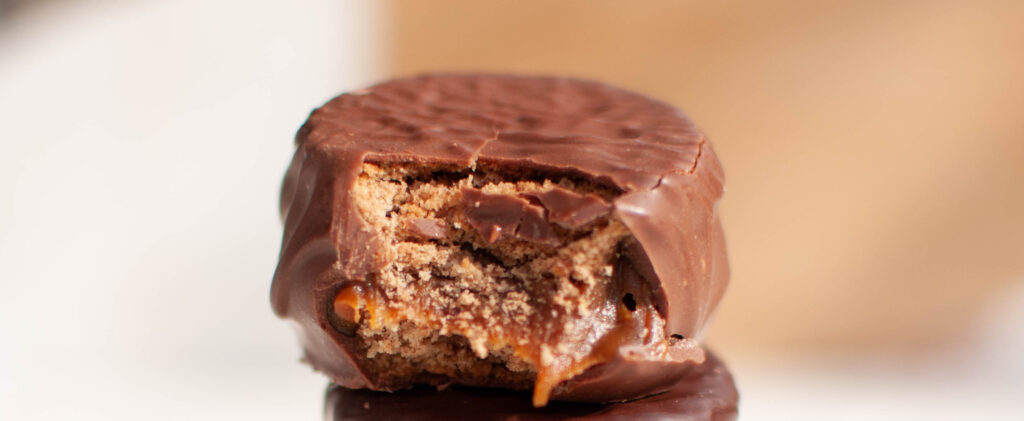
The Smooth, The Creamy, and The Crunchy - A Rough Guide to Pairing Textures when Working with Chocolate
When it comes to brainstorming chocolate concepts, no one would blame you for jumping straight into exploring delectable flavour profiles and combinations. But how much thought have you given to texture combinations, and how they can work harmoniously with the flavours in your tasty treats?
by Michael Rodber
16 June 2023
“Snap” is one of the 3 key pillars of a quality chocolate temper. Why? Because mouth-feel is equally important to taste when it comes to creating a delightful chocolate sensation. A perfectly-shelled strawberry ganache ticks all the boxes in the flavour department – the low, vanilla notes of the cream, perhaps the bitterness of a dark chocolate casing, all cut through by the tartness of the strawberry flavour. But if you eat as many chocolates as we do here at Keylink, you’ll find these textures to be nothing out of the ordinary. That’s not to say they’re bad, but there is a whole world of textures out there, just waiting to be explored!
Imagine you want to make a bowl of nachos (you’ll have to bear with me on this one). Tortilla chips alone are edible; they’re crunchy and salty, albeit a little dry. But when paired with a creamy cheese sauce, the contrasting textures bring your palate to life. When chewy bacon pieces or jalapenos are introduced into the picture, you get a perfect concoction of the creamy, the smooth, the crunchy, and the chewy.
Understanding texture profiles and how you can combine contrasting mouthfeel ingredients can help to create one coherent experience, as well as enhance or mute particular flavours. And if it can be applied to a homemade bowl of Friday-night nachos, it can be applied to artisanal bonbons and pralines. So, if you’re looking for a little insight or inspiration into how different textures can work together, you’ve come to the right place! We’ll go over a whole range of products you can use, and why you should use them, next time you make your chocolate creations!
Creamy Like Sunday Morning
A staple of many chocolate products, a creamy texture does exactly what it says on the tin (or carton). Creamy products such as ganaches, fondants and of course, creme a la carte, all tend to have full, low-noted flavours that complement chocolate’s rich, fruity, or own creamy notes, depending on the chocolate you use. Texturally, creamy fillings provide a satisfying contrast to the ‘bite’ and ‘snap’ of a well-tempered chocolate; a silky reward for the palate after breaking through a chocolate’s outer shell.
Essentially, and as you’ll come to learn throughout the remainder of this article, opposing textures typically accentuate and elevate desired elements of a texture, and mute the elements that tend to overpower the mouth-feel experience. So, with that in mind, it’s easy to understand how creamy textures complement chocolate so well.
Back to our original question; how do we make a ganache-filled chocolate more interesting in the mouth? Well, we could add a crunchy layer – perhaps a wafer – that gives the chocolate and the filling the spotlight in flavour, and adds intrigue to the bite without becoming predominantly a “crunchy ‘chocolate. Alternatively, if you’re looking to maintain a softer chocolate, a gel or fruit filling might be just what you’re looking for! These fillings tend to have sharper, high notes that cut through the chocolate and cream, as well as adding a slight ‘cling’, ‘pull’ or ‘chew’ to the palate.
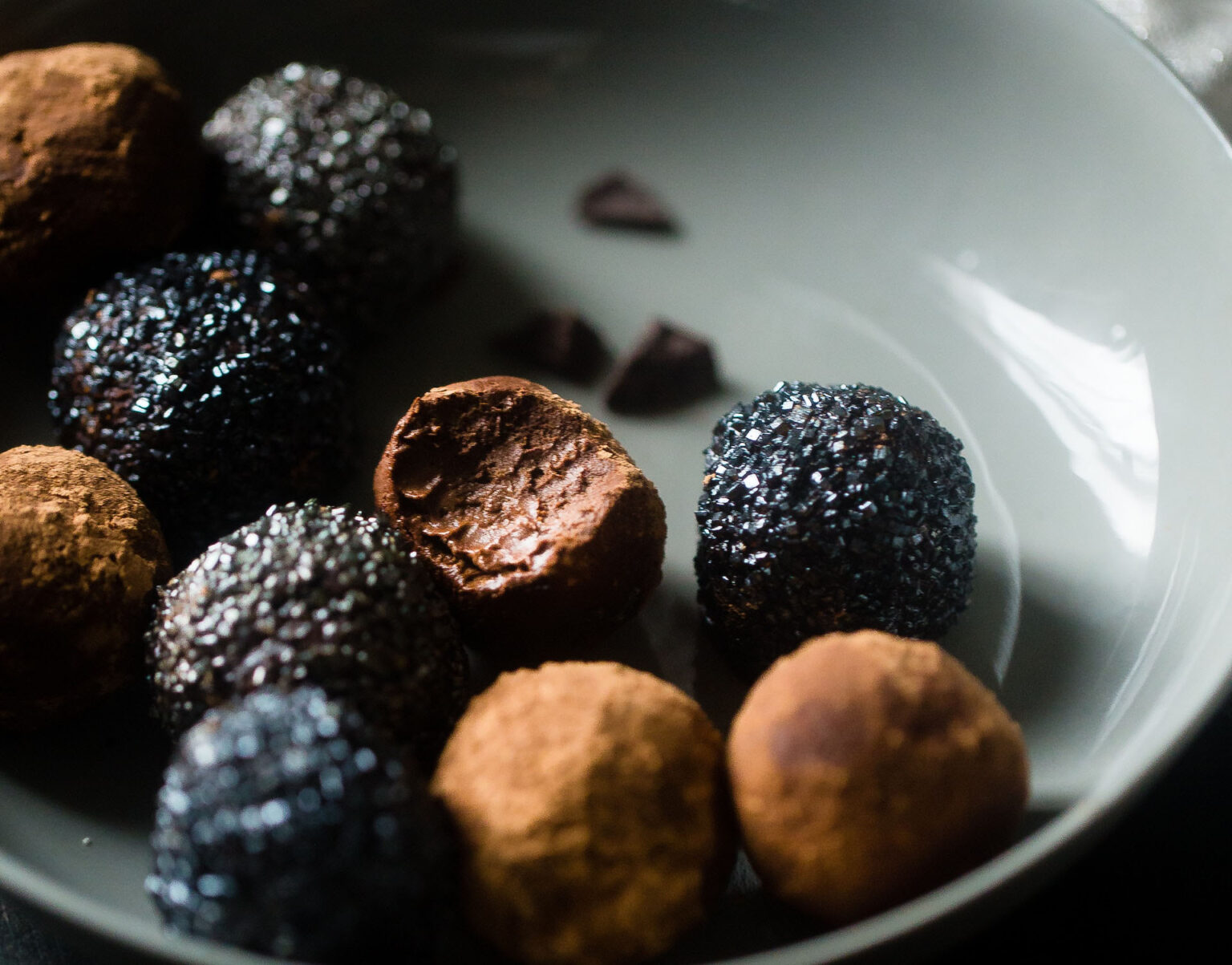
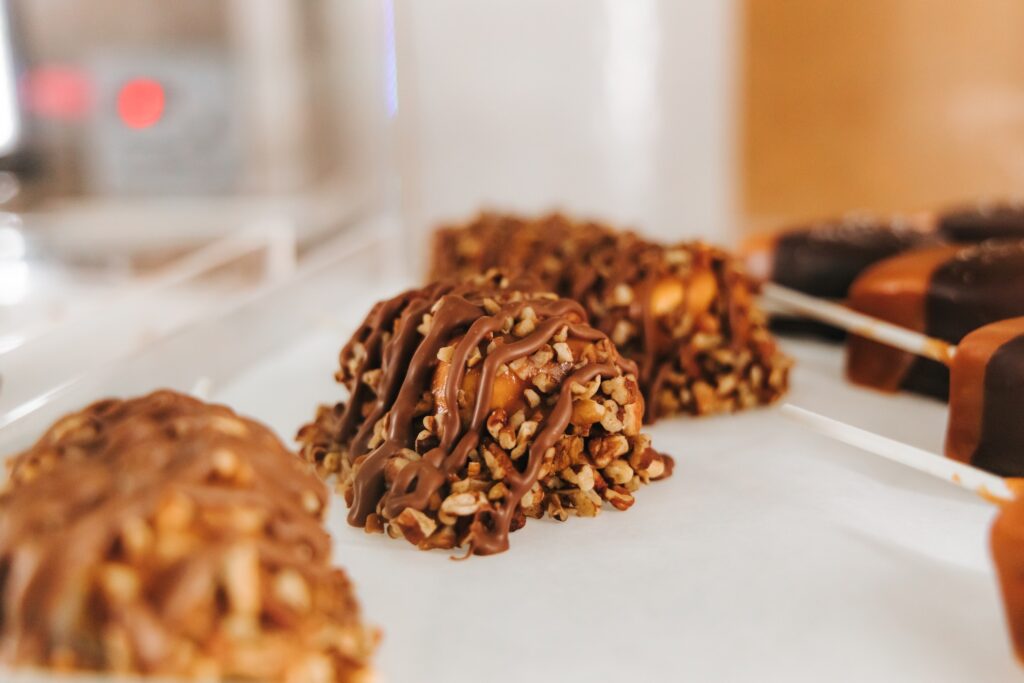
It’s Crunch Time…
Next up, we’re moving on to crunchy and hard chocolate fillings and toppings. Now, there’s more to this category than just a Crunchie-esque filling. Honeycomb may be what springs to mind, but we’re also going to be talking about nuts, nougat, and biscuit. These ingredients on their own are a great way of highlighting the smoother, softer aspects of a chocolate in contrast, like in Mona Lisa’s Crispearls, or in Cacao Barry’s Café Crokine, but can also be combined with smoother, softer ingredients. For example, nuts and caramel are a match made in heaven; the chomp and salt of the nut is complemented by the sweet chew of the caramel, highlighting and balancing both textures.
The same is true for honeycomb with a caramel ganache; honeycomb is naturally very sweet and a little sharp tasting, so using a caramel ganache instead of a direct caramel allows for a less acidic sweet taste, as well as muting the ‘stickiness’ that both honeycomb and caramel can have on the palate. Though, it is also worth noting that if you do choose to make this tasty creation, be sure to use coated honeycomb, as well as working with lower temperature products, to ensure you preserve the iconic crunch! For the same reason, avoid gels and fruit.
Smooth Operator
Another vital texture in chocolatiering, a smooth texture is the foundation of truffles and pralines, and reaches as far as mainstream chocolate bars like Mars and Bounty. And, while many smooth ingredients can have creamy flavours, it’s important to differentiate the flavour from the texture here, as we’re focusing on soft, solid fillings, such as Tintoretto, gianduja, marzipan, and truffle mass.
If you’re from the UK, when we say marzipan, your mind is likely to turn to rainy days indoors accompanied by a cup of tea and a slice of Battenberg – and while many may associate marzipan with cakes, it also has its uses in chocolate work. Though it is worth noting that our Lubeca marzipan isn’t your run-of-the-mill sugar and almond paste, it’s widely considered to be one of the best in the world, with a smoother, less gritty texture than shelf bought alternatives.
Marzipan provides a smooth, soft bite with a hint of almond, making it great as an additional texture layer without overpowering any other flavours. Perfect as a praline layer with a soft gianduja and pate de fruit, or in a chocolate to add a certain substance to a ganache, nut paste, and/or gel! This is a direct contrast to coconut; while it does have a smooth, almost dry, unique texture, it also has a distinct flavour that tends to cut through a lot of lower noted products. With this in mind, we recommend citrus flavours such as mango, passion fruit, or lime.
Tintoretto, Creme a La Carte, truffle mass and gianduja all have a similar bite; soft and solid, yet creamy in taste. These are typically the foundational ingredients to chocolates, truffles, and pralines respectively, and tend to be more of a background texture than taking the spotlight. Because of this, chewy, crunchy, hard, and even other soft textures pair nicely with these ingredients.
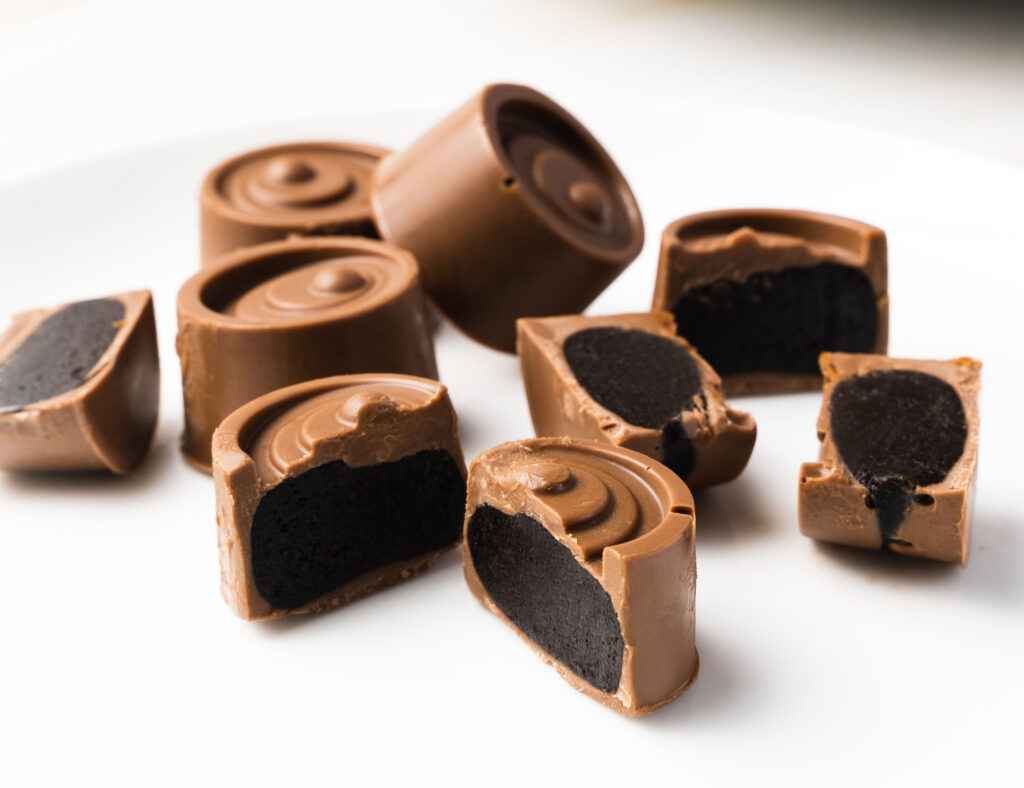
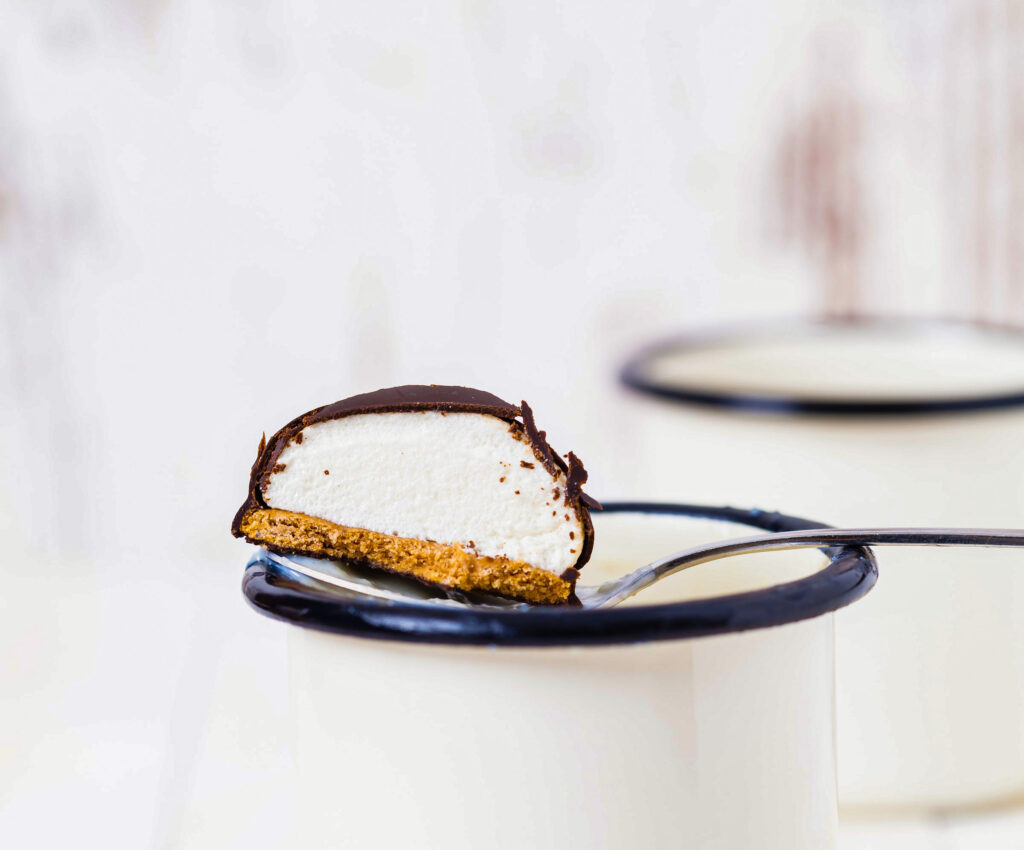
Chewing the Fat
You guessed it! Last but not least are our ‘chewy’ textures, which include the aforementioned pate de fruit, as well as the likes of of marshmallow and toffee. Marshmallow lends itself particularly well to gels (such as strawberry purée in a teacake), as well as crunchy and hard textures such as biscuit, (think Cadbury’s Boost bar!) Essentially, chewy textures have a pull that you need to sink your teeth into, so both these combining textures add an additional surprise or contrast in mouthfeel.
While crunchy textures provide just that, it’s important to keep the crunch condensed to a single area of the chocolate product. What we mean by that in practical terms is use a single peanut in the centre of a caramel chocolate as opposed to ground nuts mixed into the filling. This retains the ‘surprise’ sensation when biting into the chocolate, while avoiding a granular, or ‘sandy’ initial mouthfeel.
These are 4 core texture groups when it comes to chocolate work, with just a few examples. The combination guides above aren’t hard and fast rules by any means; there’s plenty of room for exploration in combinations, and a plethora of different ingredients to bring out the best in mouth feel and taste. Whether you’re combining all four, or sticking with one, you now have the tools to create amazing chocolate creations!

Michael is a Marketing Executive with a penchant for punk rock, cheese, and indoor bouldering.
His favourite chocolate is Valrhona Tanariva.
.svg)